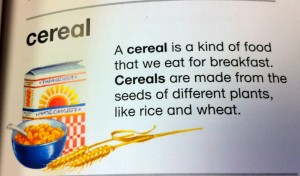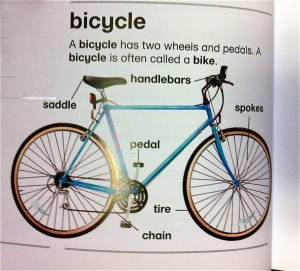by Kim Keller
Imagine waking up one day and not being able to read. It’s a frightening thought, right? Add not being able to speak with ease, and you start to get a sense of what stroke victims routinely face, the ones who are lucky enough to survive the initial brain attack.
That’s what happened to my mom. In September 2009, she had a stroke that left her aphasic, which is defined as “a partial or total loss of the ability to articulate ideas or comprehend written or spoken languages.” In short, Mom’s ability to communicate had been hugely damaged.
We could see it right away, in the immediate aftermath of her stroke. Mom was having trouble finding her words, nouns in particular. It was both frightening and frustrating for everyone involved, especially her, of course. But it was several days before we realized that Mom wasn’t just going to snap out of it, like an amnesiac cured by a second bump on the head. We finally came to accept that Mom would have to relearn how to read and write.
She had her work cut out for her. Not only having to start over, but with the built-in obstacle of diminished speech capacity. So my sister Karen and I began searching for tools to help our mother find her way back to normal adult-level communication, a process which, despite her enormous improvement, still continues to this day.
Mom says her favorite tool is one that Karen bought for her a couple years ago — The Kingfisher First Dictionary, a reference book created for children just learning to read. Mom uses this dictionary all the time. A regular dictionary, like the kind you or I would use, is just too difficult for her, too dense and confusing. The Kingfisher Dictionary is filled with pictures, large print and lots of white space, and it’s just right for Mom’s uses right now.
Karen related to me how she was watching Mom searching around the house one day, trying to make a grocery list, pulling different products out of the cabinets and refrigerator. Apparently, in order to add, say, cereal to her list, Mom would go to the cabinet, pull out her box of cereal, and then copy the letters C-E-R-E-A-L onto her piece of paper.
Karen asked her why she didn’t just use a dictionary, and Mom explained that she couldn’t. “I get lost in it,” she said. Realizing how frustrating this had to be, to face this challenge every time the need arose to write down some fairly common word, Karen did some prompt investigating and came up with the Kingfisher, with its 1,500 words and 1,000 illustrations. The definitions are simple and straightforward, and the book also includes helpful diagrams — parts of a bicycle, for example, or the human body; diagrams that are useful for anyone learning — or relearning — to read.
This dictionary, which she still keeps next to her chair, has been an indispensable tool in our mom’s recovery, one of the essential elements — along with time and Mom’s determination and courage — in helping her read again.
Kim Keller is the co-founder of In Care of Dad. She lives and works in New York City.







